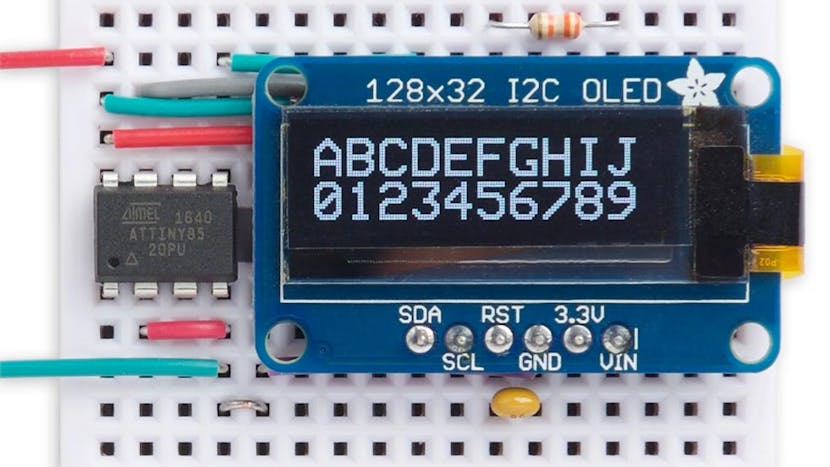TOP 13 Arduino projects in 2021
Arduino
Making your own Segway, the Arduino way
After obtaining motors from a broken wheelchair, this father-son duo went to work turning them into a new “Segway.”
The DIY transporter is controlled by an Arduino Uno, along with a pair of motor drivers that handle the device’s high current needs. An MPU-6050 allows it to react as the rider leans forward and backwards, moving with the help of a PID loop. Steering is accomplished via a potentiometer, linked to a bent-pipe control stick using a bottle cap and glue.

James Bruton demonstrates the Coanda effect with an Arduino-controlled rig
The Coanda effect, as you may or may not know, is what causes flowing air to follow a convex surface. In his latest video, James Bruton shows how the concept can used as a sort of inverted ping pong ball waterfall or staircase.
His 3D-printed rig pushes balls up from one fan stage to another, employing curved ducts to guide the lightweight orbs on their journey.
The fan speeds are regulated with an Arduino Uno and motor driver, and the Arduino also dictates how fast a feeder mechanism inputs balls via a second driver module. While the setup doesn’t work every time, it’s still an interesting demonstration of this natural phenomenon, and could likely be perfected with a bit more tinkering.

DIY Soil NPK Meter || Measure Soil Nutrient Content using Soil NPK Sensor & Arduino
In this video, we will learn about the interfacing of Soil NPK Sensor with Arduino. The soil nutrient content can be easily measured using NPK Soil Sensor & Arduino. Measurement of soil content N (nitrogen), P (phosphorus), and K (potassium) is necessary to determine how much additional nutrient content is to be added to soil to increase crop fertility.
The soil fertility is detected using NPK sensors. A major component of soil fertilizer is nitrogen, phosphorus, and potassium. The knowledge of the soil nutrient concentration can help us to learn about nutritional deficiency or abundance in soils used to endorse plant production. Apart from measuring Soil NPK, you can also measure Soil Moisture Content using Soil Moisture Sensor, which is explained in my one the previous video.
How many Arduinos does it take to knock a server offline?
This isn’t a hacking tutorial but we will take a look at the anatomy of a DOS and DDOS attack to get an idea of how a small IOT device like an Arduino with an Ethernet Shield can be used to cause a server to do massive amounts of work.
Touch Sensor based car engine starting system with Arduino (Project Simulation 1)
This project uses a touch sensor, two push-button, Arduino board(ATmega 328), LCD, and a relay with DC motor
Use This One Simple Trick to Smooth Large Fonts on Graphics Displays
Graphic displays are great at showing rudimentary numbers and letters in block form at a small 6 x 8 resolution, but kicking those fonts up to a larger size, such as 12 x 16, makes the characters look blocky or distorted. The problem here is the larger magnification also increases the empty areas within the character block; thus, the numerals look jaggy. Electronics enthusiast David Johnson-Davies has come up with a technique to fix that issue and seemingly smooth over those characters, making them readable at a distance.

The smoothing works by checking whether one of the following two situations A or B occur anywhere in the double-resolution character. (?: Technoblogy)
In his recent Technoblogy post, Johnson-Davies took a closer look at the problem, analyzed the smoothing problem, and found that the character block’s angled areas were responsible for the distortion, while the horizontal and vertical scaling of the font remained smooth. His fix entails looking at the checkered patterns at what’s being drawn, then adding a single pixel to fill in the blanks, making them appear smooth when upscaled. Johnson-Davies packaged his approach into a simple function that works in an Arduino environment, although it can easily be tailored to work no matter what language users prefer.

Stepper motor control with Arduino
Are you looking for easy way to control a step motor for your project? Are you looking for a way to control a speed of a step motor? well this video is for you. In this video, I am going to show you how to control a speed of a step motor using Arduino nano.
Canbus Display using J1939 MCP2515 Arduino and Canhacker V2
Demonstration of Arduino, MCP2515 module and tft shield displaying J1939 data from a truck also using CanHacker v2 software connected to an Arduino Nano and MCP2512 module to play back data recorded earlier.
All software needed is available including sample traces at: https://github.com/garymeg/CanBus-Mon…
How to make Mini Radar | Arduino based
Hello friends in this video I have made a Mini compact Radar with display, for that I have used HC-SR04 ultrasonic sensor, this sensor emit ultrasonic sound which came back to sensor after reflecting from an object, all the data visualization is displayed on 1.8″ ST7735 display, if any object detect by radar it’ll show in display in red line.
